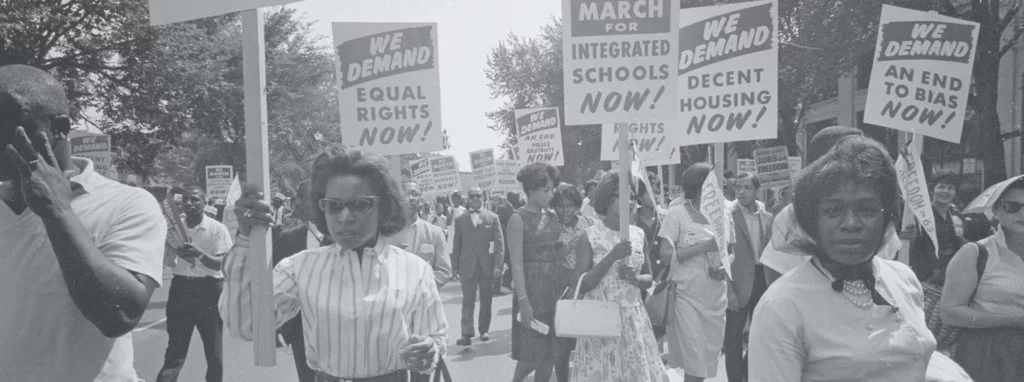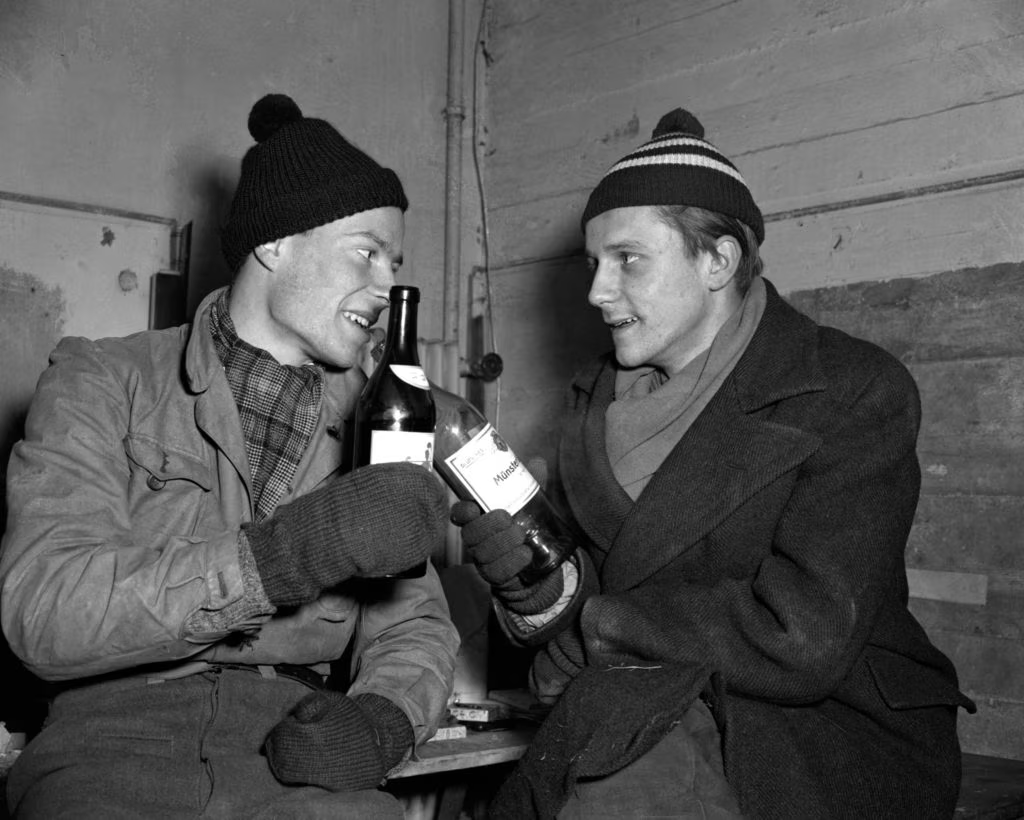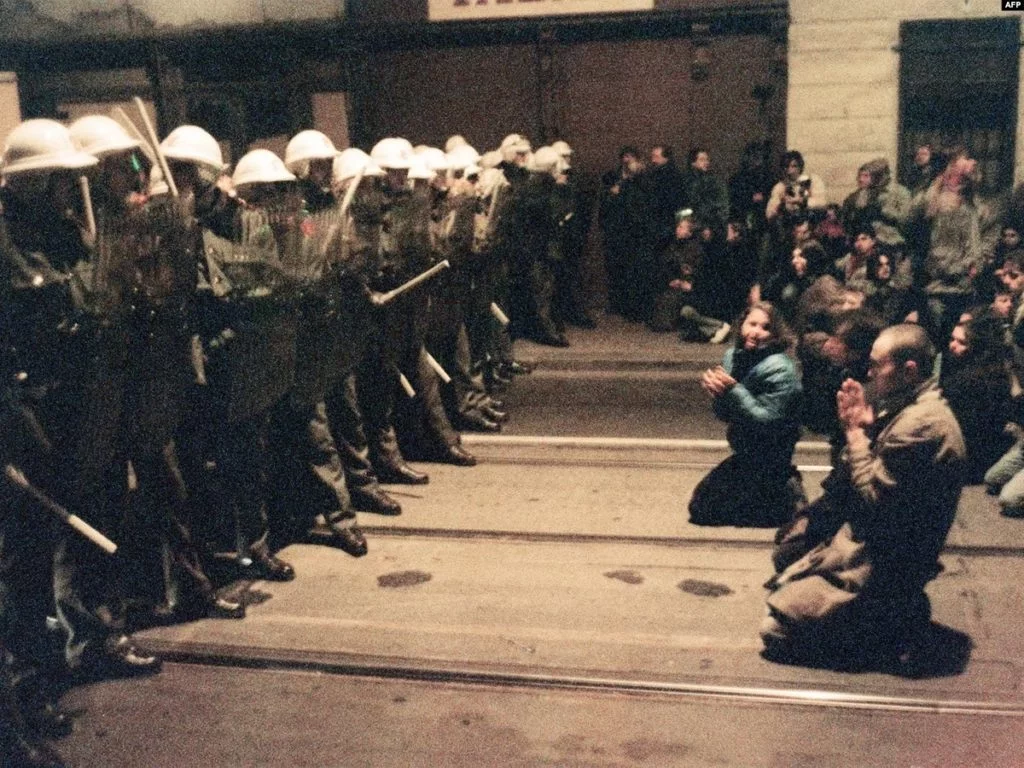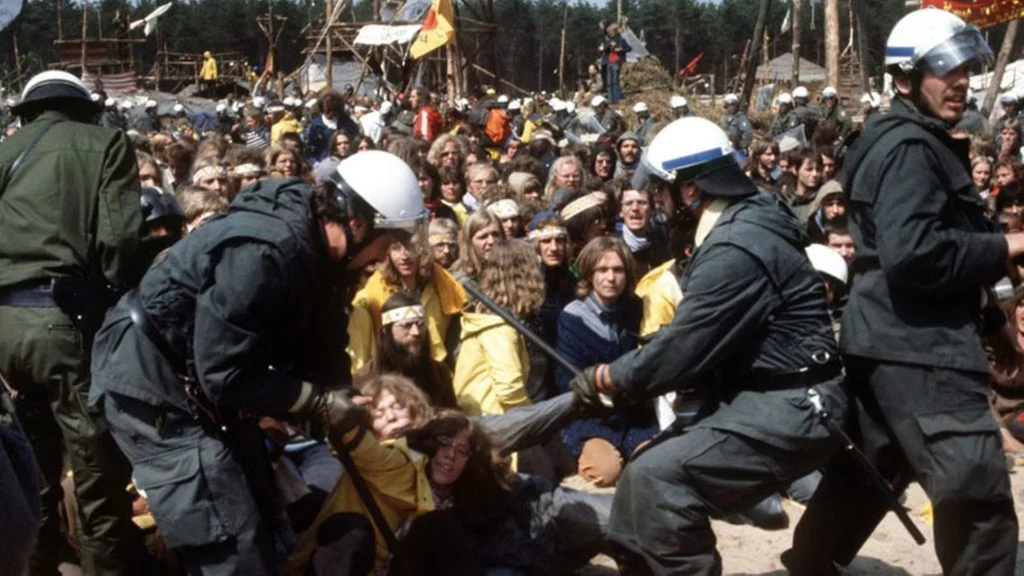
Civil resistance
Why it can work
Introduction
Effective
Civil resistance is a recognized and effective means of promoting social and political change. The NAVCO dataset, one of the largest on the subject to date, examined campaigns from 1900 to 2006 and showed that peaceful civil resistance was twice as successful as violent methodsto achieve campaign goals.[1] Reasons for this include that people can be easily mobilized because the “moral, physical, informal barriers and risks to people tend to be lower than during violent protests.”[2] Although the latest studies show that there is currently more civil resistance than ever before, but that it is also less successful, it is still the case that civil resistance remains statistically a more effective means.[3] The most famous examples are Gandhi and Martin Luther King Jr, but there are always examples in German history, such as Fall of the Berlin Wall or Heligoland. In the latter case, on December 20, 1950, two Heidelberg students, René Leudesdorff and Georg von Hatzfeld, occupied the island in a “rescue operation” for two nights and one day, thereby triggering a broad movement for the British to release Heligoland back to Germany, which lasted until then illegally used the island as a training target for the Royal Air Force. The scientific consensus does not say that civil resistance is a panacea, nor that it has to be pacifist or morally motivated, but that it makes purely strategic sense.[4]
René Leudesdorff (left) and Georg von Hatzfeld toast each other with a bottle of wine in the anti-aircraft bunker on the island of Helgoland. In December 1950, the two Heidelberg students, accompanied by two journalists, crossed over to British-occupied Heligoland. There they raised several flags.
© Source: picture alliance / dpa
Democratically
Civil resistance is closely linked to democracy. If we look at the history of the emergence of many democracies, we see that in more than 70% of the cases in which dictatorships were overthrown, civil resistance played a decisive role.[5] Examples of the long democratic tradition of civil resistance include the color revolutions in Serbia (2000), Georgia (2003), Lebanon (2005), Kyrgyzstan (2005) and the democratization in the Philippines in 1986, Poland in 1988, and the Czech Republic and Hungary in 1989, Ukraine in 2004/2005 and Nepal in 2006.[6] In addition, the scientific debate, led by people like Hannah Arendt, Henry David Thoreau and Jürgen Habermas, also revolves around: that existing democracies may rely on civil resistance to regulate themselves and strengthen their own democratic principles.[7] Civil resistance is designed to build constructive, peaceful tensions so that a society can deal with previously suppressed or unrecognized democratic deficits.[8] As Robin Celikates put it: History shows that democracies are always susceptible to distortions and manipulation and that some problems cannot be fully solved within the framework of democratic institutions. Civil resistance has often demonstrated its democracy-promoting function and has given citizens a voice that would otherwise be silenced through other institutionalized channels.[9] After all, the term democracy itself means that it is a form of government that comes from the people and that their political activity should be central to this form of government.[10]
In addition, the “Movement Action Plan” – a model that summarizes the different phases of civil resistance based on successful case studies – shows the different phases of the protest. It is interesting that even when states violate democratic values, such as freedom and equality, it is common in the initial phase of protests, also known as “normal” or “quiet” times, for the public to still criticize the actions of politicians represents.[11] Reasons for this include, for example, that the violations of democracy are not dealt with publicly and largely go unnoticed and that politicians present their work in such a way that they obviously correspond to the basic values. However, as the protests progress, it is likely that the social, political and economic structures that have enabled the other party to commit democratic deficits will be dismantled and support for civil resistance from the population will grow.[12] The anti-nuclear movement is one of many examples that illustrate these dynamics: At the beginning of the protests, it was estimated that only 10-15% of the public perceived the democratic deficits as a serious problem; over the course of the protests, this shifted to a majority of around 80%..[13]
Summary
If we now summarize, we see that civil resistance is by no means a “desperate act” or “last resort” that is used uncontrollably, but rather illustrates that it an effective and democratic means is. Without civil resistance, it is difficult to imagine the many political and social changes of the past centuries.
[1] See CHENOWETH / STEPHAN: How Civil Resistance Works, 7-8; SHARP: The Politics of Nonviolent Action, 4.
[2] See ibid.
[3] See CHENOWETH: Civil Resistance. What everybody needs to know.
[4] See ROBERTS/ GARTON ASH, Civil Resistance and Power Power Politics: the Experience of Non-Violent Action from Gandhi to the Present, p. 372
[5] See KARATNYCKY/ACKERMAN: How Freedom is Won, 6-8.
[6] See Ibid., 4; See CHENOWETH/ WILES SHAY: List of campaigns in NAVCO 1.3.
[7] See THOREAU: Civil Disobedience, 12-13.
[8] See SHARP: The Politics of Nonviolent Action.
[9] Cf. CELIKATES: Climate protest is “not anti-democratic”; See MARTIN: Democracy without elections.
[10] See OXFORD REFERENCE: Democracy.
[11] See MOYER: The Movement Action Plan, 9-10.
[12] See ibid., 26-32.
[13] See ibid., 10; 32.
Sources
CELIKATES, Robin: Climate protest is “not anti-democratic”. Interview on Deutschlandfunk. October 20.10.2019, XNUMX. Accessible online at: https://www.deutschlandfunk.de/philosoph-zu-extinction-rebellion-robin-celikates-100.html (Last accessed on November 11.11.2022, XNUMX).
CHENOWETH, Erica / STEPHAN, Maria J.: Why civil resistance works: The strategic logic of nonviolent conflict. In: International Security No. 33/1, (2008): 7-44.
CHENOWETH, Erica / WILEY SHAY Christopher: List of Campaigns in NAVCO 1.3. Harvard Dataverse. 2020. Accessible online at https://dataverse.harvard.edu/dataset.xhtml?persistentId=doi:10.7910/DVN/ON9XND (Last accessed November 14.11.2022, XNUMX).
KARATNYCKY, Adrian / ACKERMAN, Peter: How freedom is won. From civic resistance to durable democracy, New York 2005. Accessible online at: https://freedomhouse.org/
KING, Martin Luther Jr.: Letter from Birmingham Jail.” Accessible online at: https://kinginstitute.stanford.edu/
MOYER, Bill. The movement action plan. A strategic framework describing the eight stages
of successful social movements, 1987. Accessible online at: https://www.indybay.org/
OXFORD REFERENCE: Democracy. Accessible online at: https://www.oxfordreference.com/
SHARP, Gene: The Politics of Nonviolent Action, Boston, Mass. 1973. https://archive.org/
THOREAU, Henry David: Civil Disobedience. 1849. Accessible online at: https://libertas.org/
MARTIN, Brian: Democracy without Elections. In: Ehrlich, Howard (ed.): Reinventing Anarchy, Again, Edinburgh 1996, 123-136. Accessible online at: https://www.bmartin.cc/
ROBERTS, Adam / GARTON ASH: Civil resistance and power politics: the experience of non-violent action from Gandhi to the present. Oxford university press, 2009.
More literature
CHENOWETH, Erica: What everyone needs to know, 2021.
ENGLER , Marc / ENGLER, Paul: This is an uprising. How nonviolent revolt is shaping the twenty-first century”, 2016.
MARTIN, Brian: From political jiu-jitsu to the backfire dynamic: How repression can promote mobilization. In: Schock, Kurt (ed.): Civil resistance: Comparative perspectives on nonviolent Struggle, Minneapolis 2015, 145-167. Accessible online at: https://www.bmartin.cc/pubs/15Schock.pdf (Last accessed on November 11.11.2022, XNUMX).
SHARP, Gene. 198 Methods of nonviolent action https://www.aeinstein.org/nonviolentaction/198-methods-of-nonviolent-action/
FILM: Gene Sharp How to start a revolution https://www.youtube.com/watch?v=EKnoUbDIpjo
FILM: Children's March: https://youtu.be/5enZRwbnISQ
MOVIE: Freedom Riders full: https://youtu.be/srIcN1Eo_y8
FILM: United in Anger (Act Up) https://www.youtube.com/watch?v=MrAzU79PBVM
MOVIE: Gandhi (1982) https://www.youtube.com/watch?v=B7I6D3mSYTE



